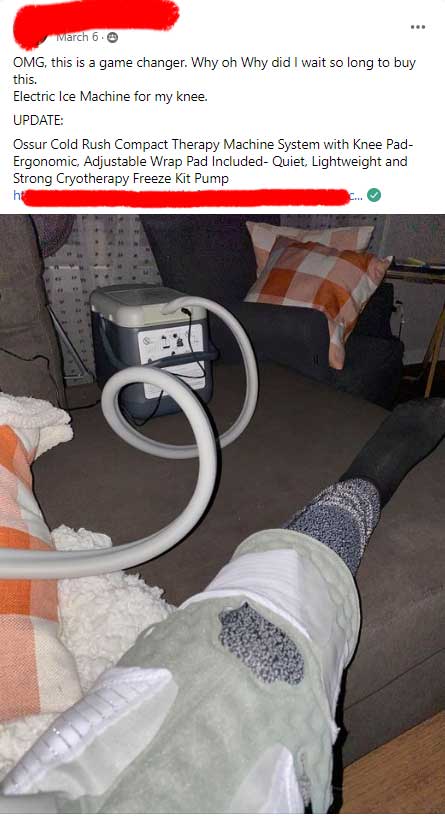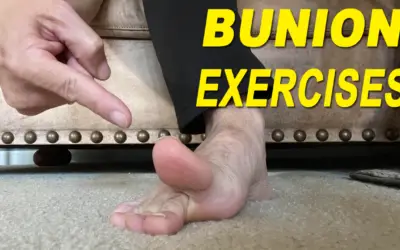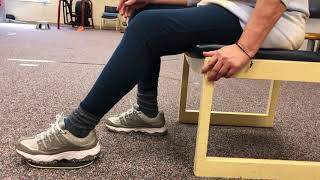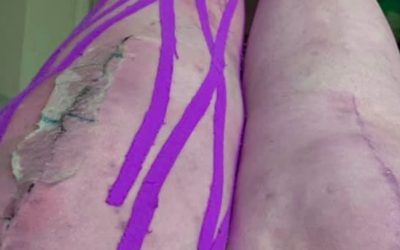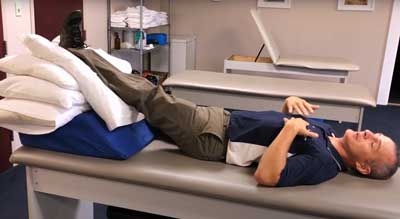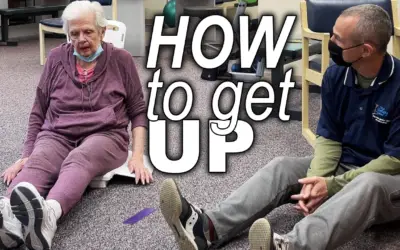How Painful Is A Total Knee Replacement
Patients have told me that a total knee replacement is more painful than a total hip replacement but less painful than a total shoulder replacement.
The pain is most intense during the first 48-72 hours after surgery. The pain improves steadily over the next 2-6 weeks.
Your surgeon and medical team should be notified if your pain is more intense than a 7 out of 10 on a pain scale with 10 being the highest intensity.
How Painful Is A Total Knee Replacement?
What you can expect:
Pain will fluctuate based on time, medication, activity, and more.
On a 0 to 10 pain scale with 0 being no pain and 10 being the most intense pain possible the first 48 to 72 hours after surgery is often described as a 7/10.
7/10 Pain is “Can’t be ignored for any length of time, but you can still go to work and participate in social activities.”
The pain will often vary between 3/10 – “Annoying enough to be distracting” at the low end up to an 8/10 “Physical activity severely limited. You can read and converse with effort. Nausea and dizziness set in as factors of pain.”
How much pain is normal and when should I be concerned?
If your pain is not improving on a daily basis during the first 2 weeks then you should consult with your surgical team for further assessment.
If your pain is so intense you are experiencing increased blood pressure, difficulty breathing or shortness of breath, and nausea you must contact your surgical team.
Here is a short video describing “normal pain after a total knee replacement.”
3 Strategies to Reduce Post Surgical Pain
1. Cryotherapy –
Cryotherapy is icing the knee or cooling the knee to reduce pain. Cryotherapy is the most popular non-pharmaceutical pain relief method recommended by nearly all surgeons after total knee replacement surgery.
This can be done with Chattanooga ColPac Gel Packs, ziplock freezer bags filled with crushed ice, or an Ossur Cold Rush Compact Therapy Machine.
While the clinical evidence may not fully support all of the claimed benefits of cryotherapy, there are many subjective reports from actual patients suggesting significant pain relief when using cryotherapy. [1]
2. Compression –
This can feel soothing and relaxing to a swollen and painful knee. Compression may be performed using a 6-inch wide elastic wrap or a velcro enclosure.
Compression helps maintain the warmth around the knee as well as reduce swelling and provide a counter-pressure to the outward forces generated by internal swelling.
These compressive wraps should be comfortable and may be used for as little as 10-minutes or as long as several hours.
A simply spiral wrap starting approximately 6 inches below the knee and progressing to 6 inches above the knee is common. I recommend a minimum of 6 inches wide elastic wrap with a 50% overlap to improve comfort.
3. Distraction –
Staying busy and keeping yourself occupied is one of the best pain management strategies available.
Hobbies, passion projects, and helping others are great ways to take your mind of the commonly experienced pain sensations associated with post-surgical recovery.
I have found that when patients have something else to do that isn’t too taxing and must be done by you and only you the body responds in positive ways.
Another part of managing the pain is understanding what is causing the pain.
There are several contributing factors to the pain and sessions you will be feeling after surgery.
Pain associated with the incision –
As your incision heals there will be different sensations coming from the skin and incision site. There will be itching, redness, and soreness. As the body heals the skin, there is an immune response that causes chemical changes in the skin and as a result inflammation and pain.
Being able to differentiate between normal healing of the skin and possible complications or infection might help reduce the actual pain associated with this process.
Signs of infection include:
-
- Foul odor
- Excessive seepage
- Increasing redness and warmth
- Increasing pain
- Increased body temperature
If you experience one of more of these symptoms then contact your surgical team.
Pain associated with bone healing –
During the procedure, the ends of your femur and tibia are mechanically removed and the implants are hammered and cemented into place. Often bone spurs are shaved off and your bone is placed under significant amounts of stress.
This bone trauma takes time to heal and is unseen to the naked eye. It is normal to have deep bone-associated pain for several weeks after surgery.
Pain above or below the surgery site.
Some surgeons use a tourniquet to reduce blood loss during surgery. This results in major soft tissue damage to the thigh musculature.
Alternatively, many patients experience significant pain in the calf and shin below the knee. This may be attributed to the new leg alignment or new walking patterns.
Both the upper leg pain and lower leg pain are frustrating and sometimes said to be worse than the knee pain.

References:
1. Markert SE. The use of cryotherapy after a total knee replacement: a literature review. Orthop Nurs. 2011 Jan-Feb;30(1):29-36. doi: 10.1097/NOR.0b013e318205749a. PMID: 21278552.
About the Author -
Anthony Maritato, PT has been a licensed physical therapist since 2006. He specializes in post surgical care and rehabilitation of total knee replacement and rotator cuff repair surgery.
Mr. Maritato is also nationally recognized as a therapist educator teaching courses related to Medicare reimbursement, contracting, and documentation.
Total Therapy Solutions LLC is Tony's primary practice which he owns with his wife Kathy who is also a licensed physical therapist.
More Blog Posts …
Do Toe Spacers Help Bunions
Yes, toe spacers help bunions by mechanically realigning the great toe with the natural structure of the medial foot and arch. Toe spacers should initially be used for short periods of time, up to 20-minutes a day during the first week before increasing to several...
Heel Slides After Knee Surgery
"I would like to know when we can officially give up the darn heel slides and other stretch exercises, or do we need to continue forever?" Heel slides after knee surgery are just one of many exercises available to increase range of motion, reduce swelling, and regain...
Does RockTape Kinesiology Tape Help Recovery After Total Knee Replacement
Yes, kinesiology tape has been studied and may be effective for patients following total knee replacement surgery. Here is a quote from a recent study concluding: "KT technique appeared to be beneficial for reducing postoperative pain, edema, improving knee extension...
5 Best Wedge Pillows for Total Knee Replacement
What is a wedge pillow? A wedge pillow is literally what it sounds like, a pillow shaped like a wedge. Wedge pillows are commonly used for people who have sleep apnea or breathing issues at night. They are also used for any condition in which a person needs to keep...
Best walking shoes after knee replacement surgery in 2022
Best Shoes After Knee Replacement: What should I wear immediately after knee replacement surgery? What are the best shoes to wear at home? At Physical Therapy?
Scheduling A Massage After Knee Replacement Surgery
Massage therapy is an effective treatment in post-surgical care to reduce pain, improve swelling, and help return patients to daily activities. Several studies have investigated the benefits of massage therapy as soon as 2 days after total knee replacement surgery....
When Can I Drive After Total Knee Replacement Surgery?
You may typically resume driving 6 weeks after total knee replacement surgery. In the US, some surgeons will allow people who had their left knee replacement resume driving sooner. The most important factor to getting clearance to drive is your ability to walk...
Shin Pain After Knee Replacement
Shin pain after a knee replacement is often due to bone strain. The knee is experiencing new loading patterns and will take up to 12-months to remodel.
What causes sciatica after knee replacement?
Occasionally after a total knee replacement, my patients reports signs and symptoms consistent with sciatica. My patients describe a sharp, burning hot poker stabbing them in the buttock with searing pain that runs down the lateral back of the leg to the knee and...
Top 3 Devices To Help Get An Elderly Person Up From The Floor
3 Best Devices in 2021 To Help An Elderly Person UP from the Floor After a Fall. Under $100, Under $1,000, and Over $2,000
